Members of the Christmas Day escape who returned to help rebuild the Colonony of Hong Kong after its return to British control in 1945 included
- David MacDougall returned to Hong Kong on 7th September 1945 as Brigadier Colonial Secretary with the Military Administration. Mac took early retirement in 1949 to take up farming in Suffolk, East Anglia, UK.
- Ted Ross returned briefly with the British Military Mission before going on to Japan in 1946 where he worked closely with Douglas MacArther's administration. Ted returned to Hong Kong in 1951 following a year long round the world honeymoon with his bride, staying untill 1965.
- S K Yee returned with the British Military Mission before going into banking then forming the S.K. Yee Medical Foundation
- Lt-Cmd Henry Hsu CN returned after retiring as Vice Admiral CN, in business then became an international hotelier based in Hong Kong
- Colonel Harry Owen-Hughes returned to work in D M MacDougall's administration & as Commandant of the post war HKVDC
- Lt Arthur Pittendrigh returned to HK in 1945 to command the Maritime Police Service with the rank of Colonel, he retired to Safety Bay in Western Australia (Where the author was married).
- Lt Tommy Parsons returned to Jardine Matheson's
- Sub-Lt Arthur Gee returned as night editor of The China Mail
- Sq-Ldr Max Oxford RAF returned in mid October 1945 as Deputy Director of Kai Tak International Airport
- F W (Mike) Kendall returned working for the Philippines Airline and was based in both HK and Manila
- Monia (John) Talan returned to run a travel business before going into laundry.
- Colin McEwan returned as Director of physical education
- Admiral Chan Chak became the first post-war Mayor of neighbouring Canton in 1945. The following year he resigned to become the first post war C-in-C South China Navy. [85]
The SOE escape team
Mike Kendall
Colin McEwan
[John] Monia Talan
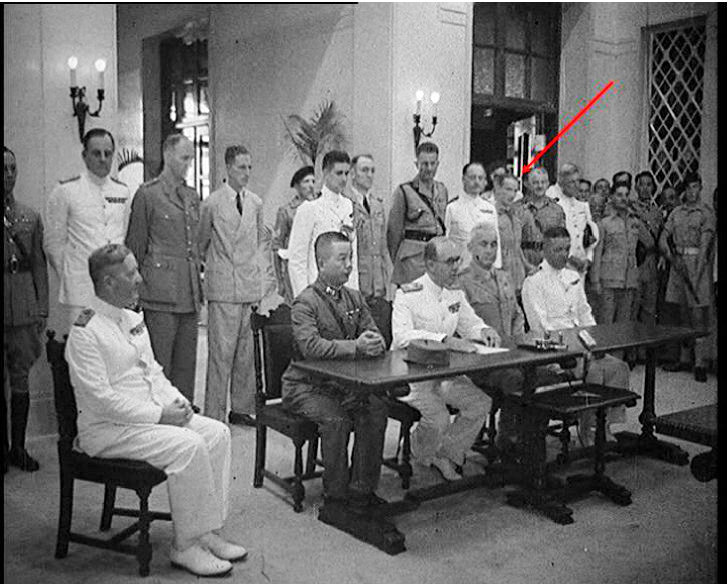
David MacDougall, (arrowed) standing next to Lt. Colonel Lindsay Ride, returned as Brigadier Colonial Secretary 7th September 1945 and witnessed the Japanese in Government House on 16th September. The tall army officer standing next but one to MacDougall is Major General Francis Festing (Frontline Frankie) C-in-C Hong Kong 1946-49
Senior Japanese officers led by Rear Admiral Ruitaro Fujita surrender the territory to British officers led by Admiral Sir Bruce Fraser, 1st Baron Fraser of North Cape sitting extreme left. At the table L-R are Major-General Pan Hwa Kuei ROC, Rear Adm Cecil Harcourt, Colonel Adrian Williams, US Army and Captain W B Creery Royal Canadian Navy..
Photo from the MacDougall family©
 David Mercer MacDougall was the first escapee to arrive back in the UK having left Chungking on the 20th February 1942 for a ten day journey to Lagos in Nigeria where he stayed with Alexander Grantham the Chief Colonial Secretary for several weeks before travelling on to London in mid/late March.
David Mercer MacDougall was the first escapee to arrive back in the UK having left Chungking on the 20th February 1942 for a ten day journey to Lagos in Nigeria where he stayed with Alexander Grantham the Chief Colonial Secretary for several weeks before travelling on to London in mid/late March.
After the Japanese surrender Mac became the first Post War Brigadier Colonial Secretary of Hong Kong 1945 - 1949. He was acting Governor from May 1947 - 25 July 1947. He quickly restored the administration in Hong Kong to a level of efficiency that made it the most shining example of all the territories liberated from the Japanese.
He focused on the immediate needs of the Colony, feeding the local population and maintaining stability. Two months in and he still only had 18% of the required administrative staff required, But David worked steadfastly, laying the foundations for modern day Hong Kong.
Mac thought long and hard during his return to the UK via Lagos in the spring of 1942 about the defeat, and was of a mind that had they mobilized 75,000 of the Hong Kong Chinese they may have avoided defeat. As the Japanese occupation neared its end a fierce battle for the hearts and minds of the Hong Kong Chinese raged between the American backed Chinese and the British for post war control.
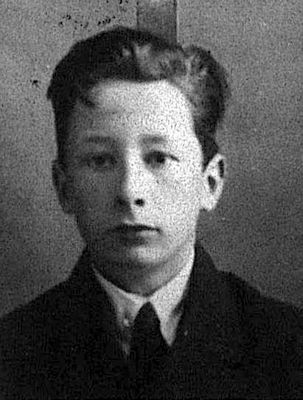
Lt Arthur Pittendrigh returned to Hong Kong after demobilised from the British Indian Army where he held the rank of T/Major. Arthur took command of the Hong Kong Maritime Police Service with the rank of Colonel. He retired to Safety Bay in Wester Australia where he died in 1968.
 Lt Alexander Kennedy had an astonishing coincidence. His wife to be left Hong Kong onboard the SS Ulysses of the Blue Funnel line on the morning of Sunday 7th December bound for Australia and the USA. The "Ulysses" was torpedoed and sank off the coast of South Carolina on the 11th April 1942. The entire crew and passengers were rescued by a US Destroyer. After some weeks of American hospitality they departed from New York onboard the SS Myrmidon bound for Glasgow arriving on the same day as the 2nd MTB Flotilla crews on board the "Narkunda" arriving on 22nd May.
Lt Alexander Kennedy had an astonishing coincidence. His wife to be left Hong Kong onboard the SS Ulysses of the Blue Funnel line on the morning of Sunday 7th December bound for Australia and the USA. The "Ulysses" was torpedoed and sank off the coast of South Carolina on the 11th April 1942. The entire crew and passengers were rescued by a US Destroyer. After some weeks of American hospitality they departed from New York onboard the SS Myrmidon bound for Glasgow arriving on the same day as the 2nd MTB Flotilla crews on board the "Narkunda" arriving on 22nd May.
Failing eyesight prevented Kennedy from watch keeping and he was posted to HMS St Christopher, the Coastal Forces training base at Fort William. As the base was being wound down for decommissioning in December 1944 Kennedy applied for and was accepted to attend the Staff Officer training course at the Royal Naval College, Greenwich. On completion he joined the staff of Rear-Admiral Rivett-Carnac at the Admiralty with the rank of Lt-Cmd RNVR, planning an advanced Pacific base. In April 1945 Kennedy flew out to Sydney, Australia as ADC to the Admiral. He then transferred to the staff of Commodore Murray-Smith on board the aircraft carrier HMS Pioneer, with the title Lieut-Cdr Staff Officer (Logistics) Pacific Fleet, Despatches.
The Pioneer was later attached to Admiral Harcourt's task force to re-occupy Hong Kong. Back in Hong Kong Kennedy met fellow escapee MacDougall, now with the military title of Brigadier Colonial Secretary. He also met Colin McEwan again. Kennedy made sure was ashore in Hong Kong when the formal Japanese surrender took place on 16th September, thus completing his full circle.
"I have been a sort of Marco Polo in reverse."
Kennedy was awarded the VRD for twenty years service as an officer in the Royal Naval Volunteer Reserve.
Kennedy wrote Hong Kong Full Circle 1939 - 1945 in 1949 but could not get it published, he eventually self published with 500 copies printed in 1969.
Sub-Lt Brewer remained in Burma serving on ML1104 earning an MiD in June " For Bravery and Resolution while serving in Burma" along with five fellow Burmese RNVR officers in 1942. On arriving in the UK he transferred to the Transferred to the Imperial RNVR. Tragically he was killed in a motor-cycle accident on the A1 in England on 28th July 1942 while serving with HMS Drake.
He was buried in the GILLINGHAM (WOODLANDS) CEMETERY, KENT (Naval Reservation. Grave 1447)
Lt R. R. W. Ashby HKRNVR was awarded the DSC. Later as O.C. the 33rd MTB Flotilla he was responsible for causing U-439 andU-659 to collide and sink on the 4th May 1943. He returned to the Far East as Senior Officer Arakan Coastal Forces during the Arakan campaign in Burma 1944 where he added a bar to his D.S.C. He kept the ships "Fair Log" for MTB 07 covering the period 1st July 1941 to 8th March 1942. 'Ron Ashby played a most significant part in the re-taking of Rangoon, Singapore and Hong Kong from the oppression of the Japanese. To this end the Arakan Campaign, led by Admiral Lord Mountbatten and General Sir William Slim, was of vital importance.'
Lt-Cmd G H Gandy, Lt Collingwood; Lt A Kennedy, C. P.O. CPO Gilbert Thums; P.O. Buddy Hide, P.O. Jix Prest<; Coxswain Bill Schillemore; P.O. R. J. C. Priestley; A/B A. L. Downey; Rob Stonell;AB Al Rutter; were all mentioned in Despatches. T. G. Duckworth Mentioned in Despatches (Posthumous) for their action against the Japanese forces in Kowloon harbour on the 19th December 1941.
 Admiral Chan Chak made an official visit to Britain in August 1933.[90] Portsmouth, home to the largest and most powerful maritime force in the world had a profound impact on the Admiral, and strengthened his ambition to command a proper sea going navy.
Admiral Chan Chak made an official visit to Britain in August 1933.[90] Portsmouth, home to the largest and most powerful maritime force in the world had a profound impact on the Admiral, and strengthened his ambition to command a proper sea going navy.
In 1942 he was granted the dignity of an Honorary Knight Commander of the Military Division of the Order of the British Empire (K.B.E.) by King George VI for his contribution in quelling subversion, keeping up the morale of the Chinese community, maintaining transport, food supplies, currency circulation and so forth during the conflict, and leading the allied party through enemy lines to Free China.
Admiral Chan was only the 2nd Chinese National ever to gain this prestigious award, the other being Major General Tsai-li T'ang on 3rd March 1920.[62]
In 1945 as the first post-war Mayor of Canton Admiral Chan Chak accepted the Japanese instrument of surrender. In 1946 he resigned to become the first post war C-in-C of the South China Navy.[88]
Admiral Chan Chak kept a meticulous diary and photographic record covering the events in Hong Kong and subsequent escape.
Chan Chak was baptised at the Union Church in Chungking on the anniversary of the Christmas Day escape from Hong Kong.[53] He also broadcast Christmas Day greetings to the UK on BBC radio along with Lady Montgomery.[87]
General (then Colonel) Yee Shiu Kee known simply as S.K. was granted the dignity of an Honorary Commander of the Military Division of the Order of the British Empire (C.B.E.) by King George VI for his contribution to Hong Kong prior to the British surrender. In November 1983 he set up the S.K. Yee Medical Foundation with the considerable wealth he had built up from his post war banking career.
 Lt-Cmd Henry Hsu Heng CN was granted the dignity of an Honorary Officer of the Military Division of the Order of the British Empire (O.B.E.) by King George VI for his exploits in Hong Kong and the subsequent escape. He retired as Rear Admiral and went on to achieve high office becoming an MP and a legislator in the Taipei Parliament. Henry also became an international hotelier including the prestigious Los Angeles Airport Hilton, as well as becoming an International Olympic Committee member. Henry was delighted to be appointed as Honorary President of the Hong Kong Escape Re-enactment Organisation [HERO] giving me a first hand account of the events in Hong Kong and subsequent escape in a personal video interview in 2006.
Lt-Cmd Henry Hsu Heng CN was granted the dignity of an Honorary Officer of the Military Division of the Order of the British Empire (O.B.E.) by King George VI for his exploits in Hong Kong and the subsequent escape. He retired as Rear Admiral and went on to achieve high office becoming an MP and a legislator in the Taipei Parliament. Henry also became an international hotelier including the prestigious Los Angeles Airport Hilton, as well as becoming an International Olympic Committee member. Henry was delighted to be appointed as Honorary President of the Hong Kong Escape Re-enactment Organisation [HERO] giving me a first hand account of the events in Hong Kong and subsequent escape in a personal video interview in 2006.
Chiang Kai Shek fled to Formosa [later known as Taiwan] in 1949 after Mao Tse-tung's Communist Red Army defeated them in the long and bloody civil war.
The epic escape journey from Hong Kong to Rangoon was 3182 miles [5120 km] and took 51 days. The marching part of the China trip was through the jungle, and over mountainous Country 7000 feet above sea level, with no roadways. On the whole, the morale, spirit, and courage of the party were magnificent. The thought of beating the Japanese to get home after three years, four in some cases kept us going.
A/P.O. (Buddy) S. J. Hide is my late father & I am looking for any information regarding this remarkable escape from Hong Kong on Christmas day 1941.
Of the sixty eight men that escaped successfully from Hong Kong sixty five went on to survive WW II
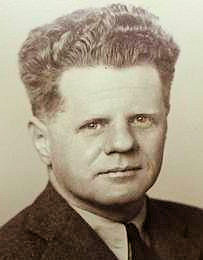 The SOE was a secret organization established under the British Minister for Economic Warfare in 1941 to harass the enemy from behind the lines by a system of sabotage, espionage, and intelligence. Force 136 was the Far East arm of the SOE.
The SOE was a secret organization established under the British Minister for Economic Warfare in 1941 to harass the enemy from behind the lines by a system of sabotage, espionage, and intelligence. Force 136 was the Far East arm of the SOE.
Buddy Hide married within days of getting back to the UK. After a short leave he returned to the Far East. Buddy retired from the Royal Navy in 1955 after 22 years distinguished service and emigrated to Mwadui [Williamson Diamonds Mine] in Tanganyika where I was brought up.
Click here for Major-General C. M. Maltby G.O.C. China report on the Battle for Hon Kong
Research and web publication by Buddy Hide Jnr ©
The contents of this web site led to a considerable number of escapee families contacting me and now each other, and remains the principle source of contact and private information for the spin off projects that have followed. The personal accounts enabled me to record the complete and true account of this remarkable episode of Sino-British war time co-operation. The information compiled here has directly resulted in a museum exhibition in Hong Kong, a re-enactment of the escape in Hong Kong and China, with a movie drama and documentary in the making.
Contact | Mwadui | Guest Book | Top | © MCMXCVI Hamstat Integrated Systems | Escape from Hong Kong
Site maintained by Hamstat Integrated Systems Inc
Thank you all for your contributions, may our forefathers be remembered.
HTML5 requires a recent, fully-updated web browser. If you experience any problems, you need to update your browser.
© Hong Kong Escape.org 2019

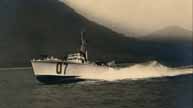
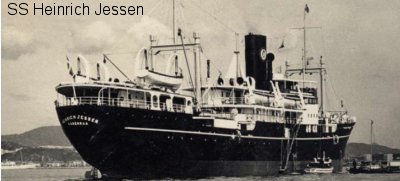
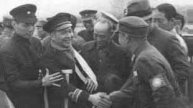






 The SOE was a secret organization established under the British Minister for Economic Warfare in 1941 to harass the enemy from behind the lines by a system of sabotage, espionage, and intelligence. Force 136 was the Far East arm of the SOE.
The SOE was a secret organization established under the British Minister for Economic Warfare in 1941 to harass the enemy from behind the lines by a system of sabotage, espionage, and intelligence. Force 136 was the Far East arm of the SOE.
